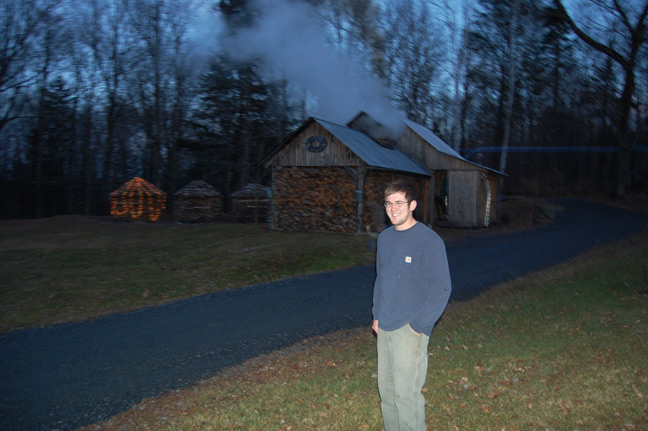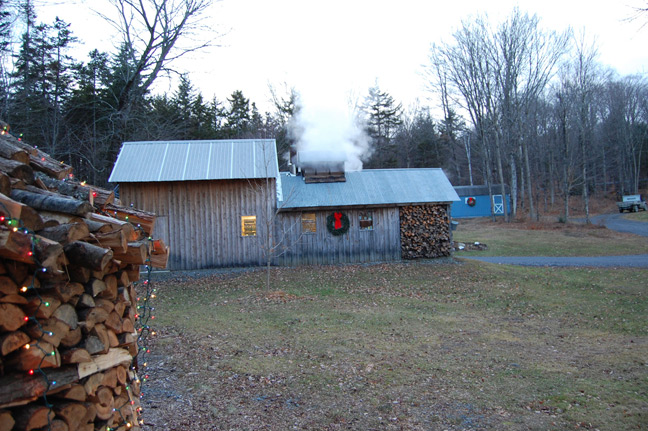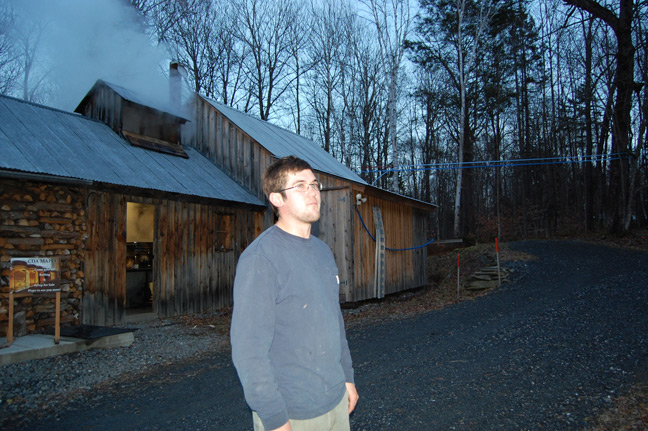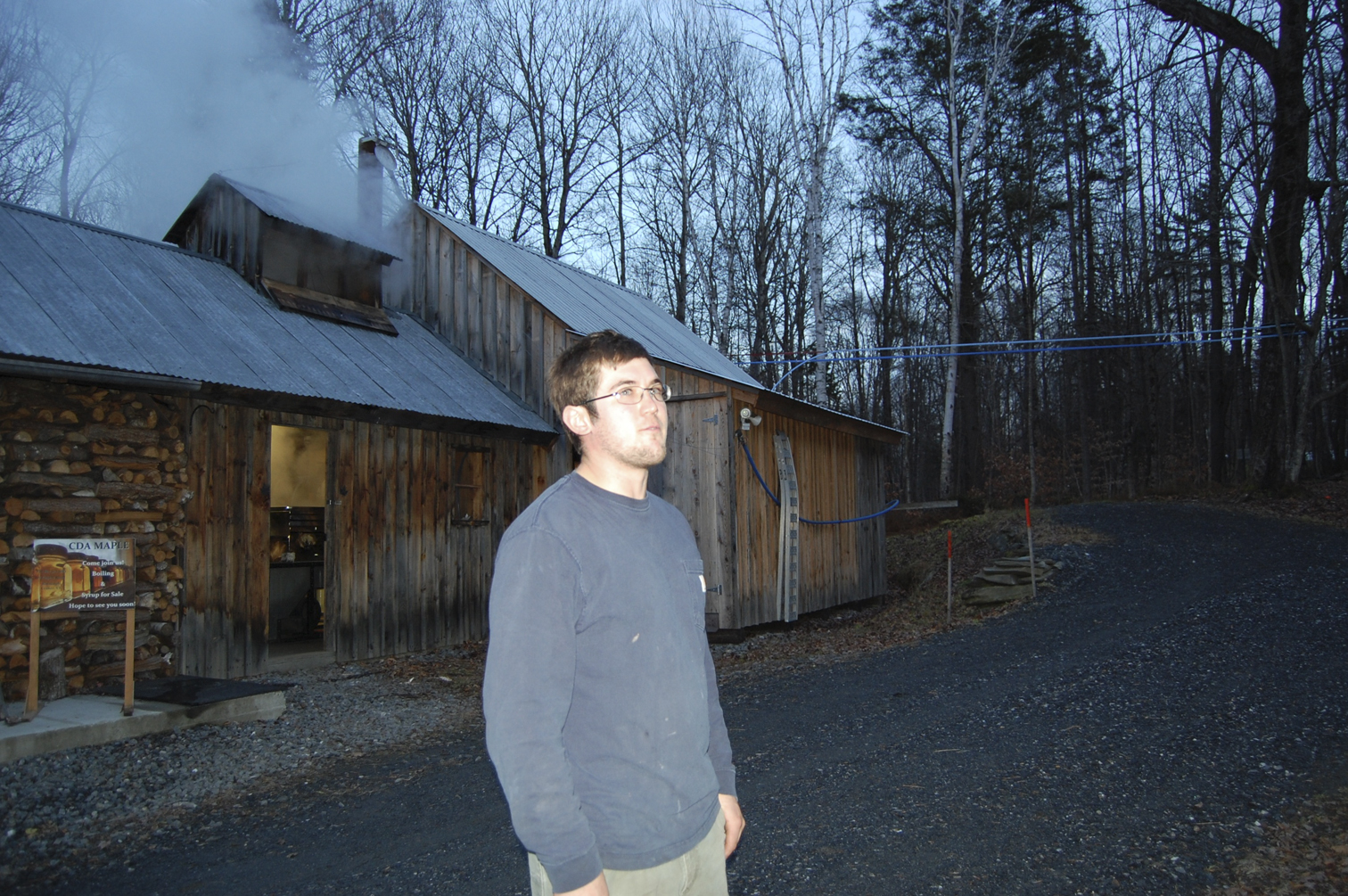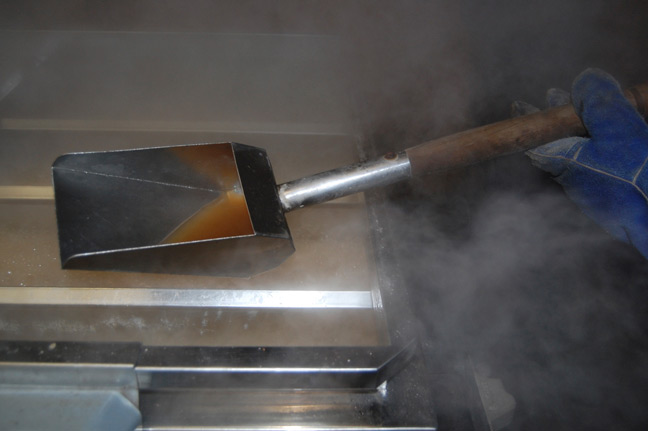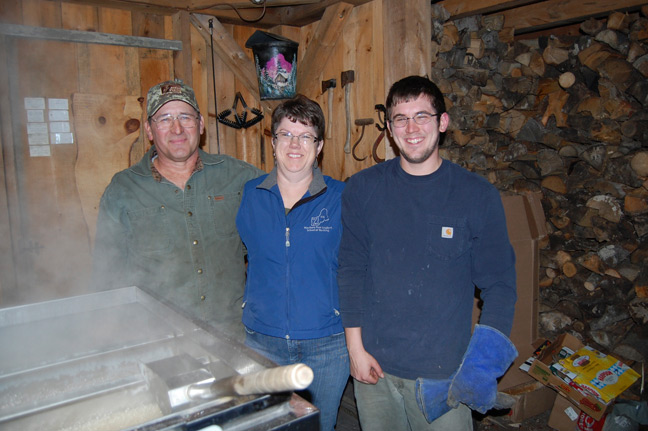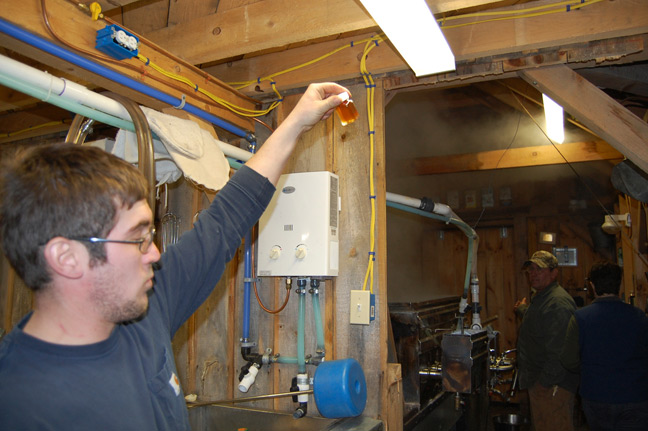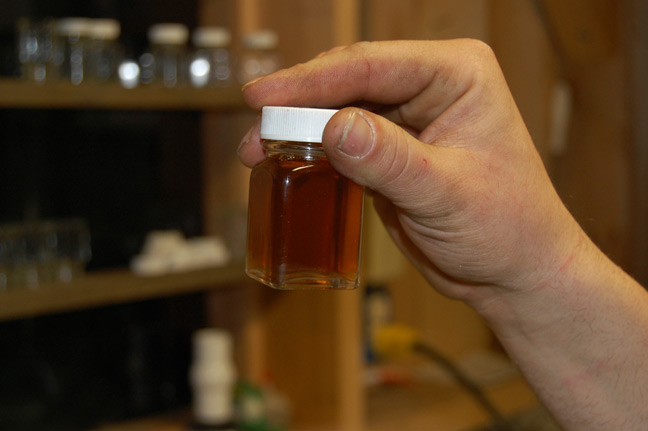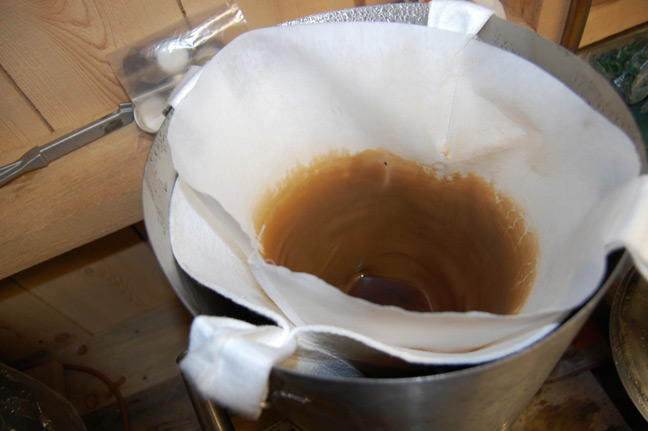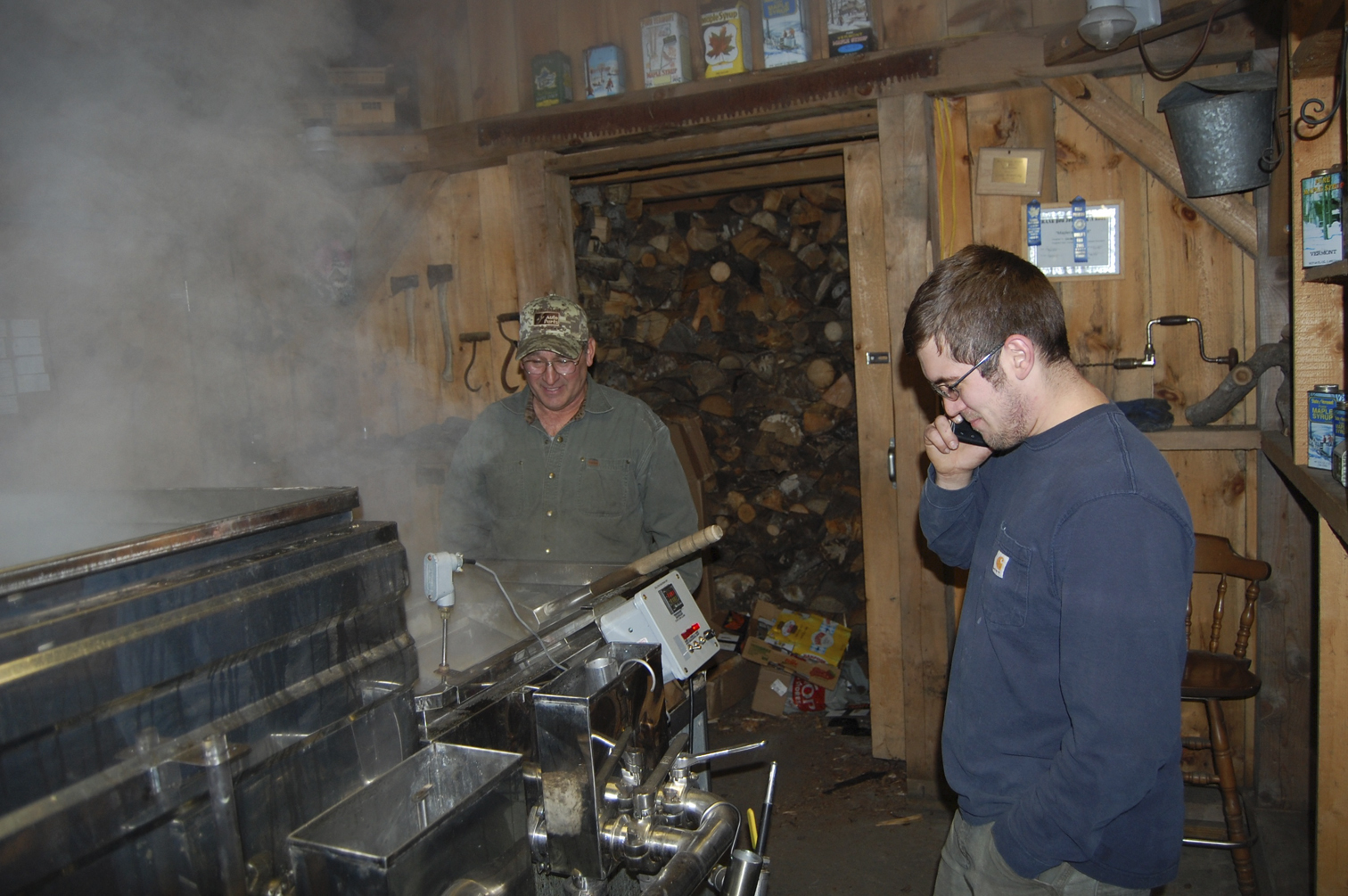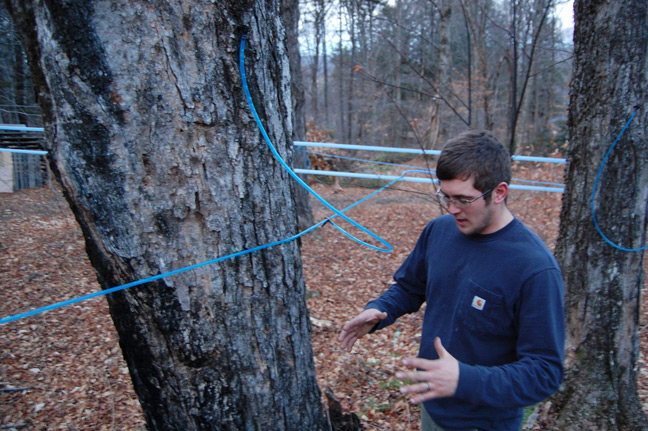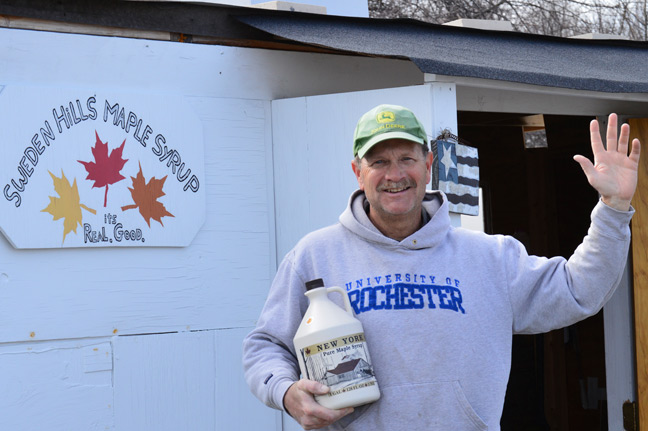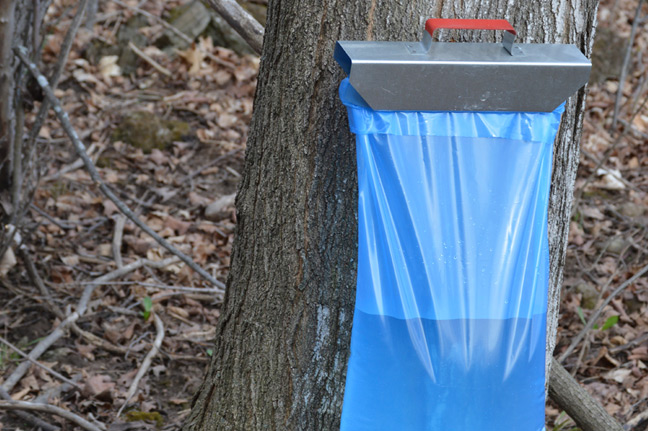Sap & Syrup
'Autumn Blend'
By PETER GREGG |
RANDOLPH CENTER, Vt.—Some call it defying Mother Nature, others would call it taking advantage of her, but the fall tappers are at it again.
"I only planned on having enough sap to boil on the stove," said Cody Armstrong, one of the few brave souls who tapped trees this fall. "I thought it would be cool."
Armstrong, 24, and co-owner of CDA Maple in Randolph Center, Vt. with his parents Doug and Andrea, was little prepared for what came next.
The 100 trees that they tapped a few days before Thanksgiving gushed sap during an unusual warm spell the first two weeks of December.
"It ran like crazy," Armstrong said.
Granted it wasn't the best sap in the world. In fact, it was pretty lousy. Only 1.2 percent sugar and loaded with niter. But Armstrong is not one to let sap dump on the ground. So he decided to boil it all in his 3x8 Leader.
During a tour for The Maple News on Dec. 12, the Armstrong sugarhouse was simultaneously lit up with Christmas lights and billowing with steam off the evaporator—an unusual sight.
"It's been very odd," said Andrea Armstrong, as son Cody fielded phone calls on his cell phone from curious neighboring sugarmakers.
Because there wasn't enough sap to give him permeate to clean out the R/O, Armstrong decided to boil all that 1.2 sap raw. Three long boils in all, mostly on the weekends. He produced a little more than 5 gallons of light grade syrup.
"We call it our 'Autumn Blend,'" joked Doug Armstrong.
Cody Armstrong's original plan was to tap the trees as an experiment to see if the holes would stay open until the end of April. He started drilling on Nov. 21 and used brand new 3/16th lines.
He figures the holes will probably stay open, as long as high vacuum keeps pulling the sap away from the holes before the trees go dormant for the winter. Armstrong is also using ball check spouts to prevent backflow into the taphole.
Armstrong said that he simply wanted to see if he could get a head start on tapping for the 2016 season while the ground was bare. It only took him only a short time to tap those 100 trees in November. In February, in knee deep snow, it would've taken him much longer.
"All the big guys are tapping in early January these days," he said. "So what's the difference being tapped in December?"
Dr. Timothy Perkins, who heads up the UVM Proctor Maple Research Center in Underhill Center, Vt. said every year there are some producers who try making syrup in the fall. There are two distinct seasons, so the potential is there.
"The issue I’m most interested in is fall tapping in relation to climate change," Perkins said. "Right now we have these two very separate sugaring seasons, fall and spring. We know that, the last two winters notwithstanding, the spring sugaring season is occurring earlier and earlier in the calendar year compared to when it historically did and is gradually getting shorter in duration."
"At some point it is possible that the two distinct seasons will begin to merge together to form one long season," Perkins said. "When this happens, we might start to see a point when a fall taphole can also be reasonably productive in the spring season."
Out in Western New York, another sugarmaker has made an annual tradition of tapping at least half of his trees in the fall, even if they only give him one third the production of the trees he taps in the spring.
"We do this every year," said Mark Hedman of Sweden, N.Y.
Hedman says fall tapping is just barely worth it. But the trees he taps in autumn are virtually inaccessible in the winter, tucked past a wetlands area that is deep in snow and ice in the winter months.
So to get a little extra production for his operation, Hedman decided five years ago to tap those outlying trees in early November and shut them down by early January.
At first he didn't even know he could tap in the fall. But he saw a window of typical sugaring weather and decided to give it a try.
"Sure enough, it worked," he said.
This year he tapped about 300 trees on Nov. 7 using sap bags and said he hoped to make 100 gallons of syrup this season. Production weather has been very ideal in the East. In fact, his biggest problem was a lack of freezing nights. Overall, temperatures in early December have mimicked March weather.
"If there was any year to try fall tapping, this would be the year to do it," Perkins said.
Hedman's best sap was 1.8, but most of it was 1.4 or less. All of the syrup was dark.
"It's probably not worth it given all the work, but we love doing it so much we do it anyway," Hedman said.
For a sugarmaker looking to experiment with fall tapping, Perkins does not recommend retapping that same hole in the spring.
"A taphole drilled in the fall will not be very productive in the spring due to the tree wound response process," he said.
Meanwhile, back in Randolph Center on Dec. 12, the Armstrongs are anxious to see how those 100 trees will produce in the spring. They plan on getting good sap from those same trees.
"We will see how they flow," Cody Armstrong said. "If they stop two weeks before all the other trees I'll know the reason why."
Both Armstrong and Hedman said they plan on adding their fall production numbers to their 2015 season totals rather than calling it the first batch of the 2016 season.
Armstrong said this was a one-year experiment and will not likely do it again.
But Hedman said he will probably be back at it again next November.
"We always say we'll never do it again but we always do," he said.
December 2015















